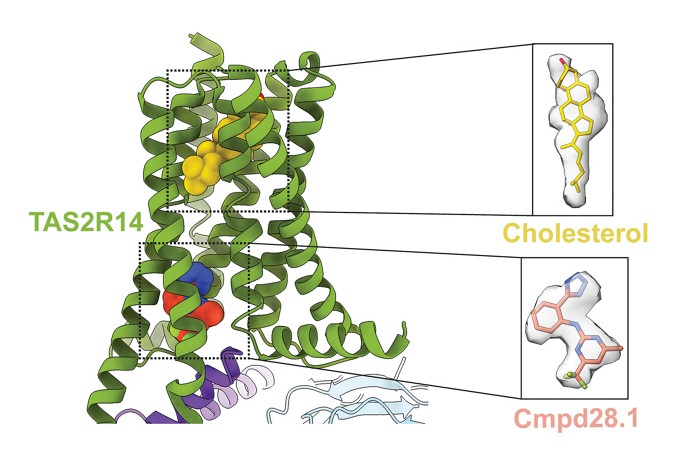Advertisement
Grab your lab coat. Let's get started
Welcome!
Welcome!
Create an account below to get 6 C&EN articles per month, receive newsletters and more - all free.
It seems this is your first time logging in online. Please enter the following information to continue.
As an ACS member you automatically get access to this site. All we need is few more details to create your reading experience.
Not you? Sign in with a different account.
Not you? Sign in with a different account.
ERROR 1
ERROR 1
ERROR 2
ERROR 2
ERROR 2
ERROR 2
ERROR 2
Password and Confirm password must match.
If you have an ACS member number, please enter it here so we can link this account to your membership. (optional)
ERROR 2
ACS values your privacy. By submitting your information, you are gaining access to C&EN and subscribing to our weekly newsletter. We use the information you provide to make your reading experience better, and we will never sell your data to third party members.

DRUGS IN SPORTS
Canadian scientists have identified a new “designer” steroid purportedly synthesized to avoid detection in standard drug tests, but there’s no evidence so far that athletes have used it.
The World Anti-Doping Agency (WADA), based in Montreal, announced the discovery of desoxymethyltestosterone (DMT) during a conference call with reporters on Feb. 1. According to WADA and press reports, the steroid was among drugs confiscated by Canadian customs agents at a U.S.-Canadian border crossing in December 2003. Last June, WADA officials received an anonymous e-mail tip that the steroid was part of the seizure. WADA then worked with customs officials to obtain samples, which were tested at the Doping Control Laboratory at the University of Quebec, in Montreal.
DMT is the third designer steroid to be discovered. The first two were norbolethone and tetrahydrogestrinone (THG), which were identified in 2002 and 2003, respectively, by chemists at the Olympic Analytical Laboratory at the University of California, Los Angeles (C&EN, Nov. 17, 2003, page 66).
The Montreal lab, directed by Christiane Ayotte, has collaborated with medicinal chemist Donald Poirier and his group at the University of Laval, in Sainte-Foy, Quebec, to further study DMT and to work out a possible synthesis.
Their synthesis starts with epiandrosterone, a natural reduction product of testosterone that is excreted in urine, Ayotte tells C&EN. They react epiandrosterone with p-toluenesulfonyl chloride and trimethylpyridine to remove the hydroxyl group at C-3 of the steroid ring system. A pair of olefin isomers form, the 3-ene and 2-ene. Reaction of these intermediates with methyllithium adds a methyl group to C-17 and converts the keto group there to a hydroxyl group, resulting in DMT. Ayotte believes this is the likely approach used by the chemist who originally made the steroid because her team detected the two intermediate isomers as impurities in the seized material.
The Montreal lab is conducting liver cell culture studies on DMT to identify metabolites and plans a research paper to report the physiological properties of the steroid, Ayotte says.
The discovery of DMT is not exclusive to the Montreal lab, however. The UCLA lab and the Doping Control Laboratory of Athens have collaborated to identify DMT in a different sample anonymously sent to the UCLA lab last year. Don H. Catlin of the UCLA lab and Costas Georgakopoulos of the Greek lab and their coworkers reported their findings on Feb. 11 [Rapid Commun. Mass Spectrom., 19, 781 (2005)].
The UCLA-Athens team has further identified the steroid as madol, short for methylandrostenol, which was first reported in a patent in 1961. Madol was shown to have high anabolic (muscle-building) effects, but it was never approved for use and has not been widely studied since that time. The researchers report a synthesis and rapid detection method for the steroid similar to that reported by the Montreal lab. They also report metabolites of the steroid obtained by a baboon study and human liver cell culture study.




Join the conversation
Contact the reporter
Submit a Letter to the Editor for publication
Engage with us on Twitter